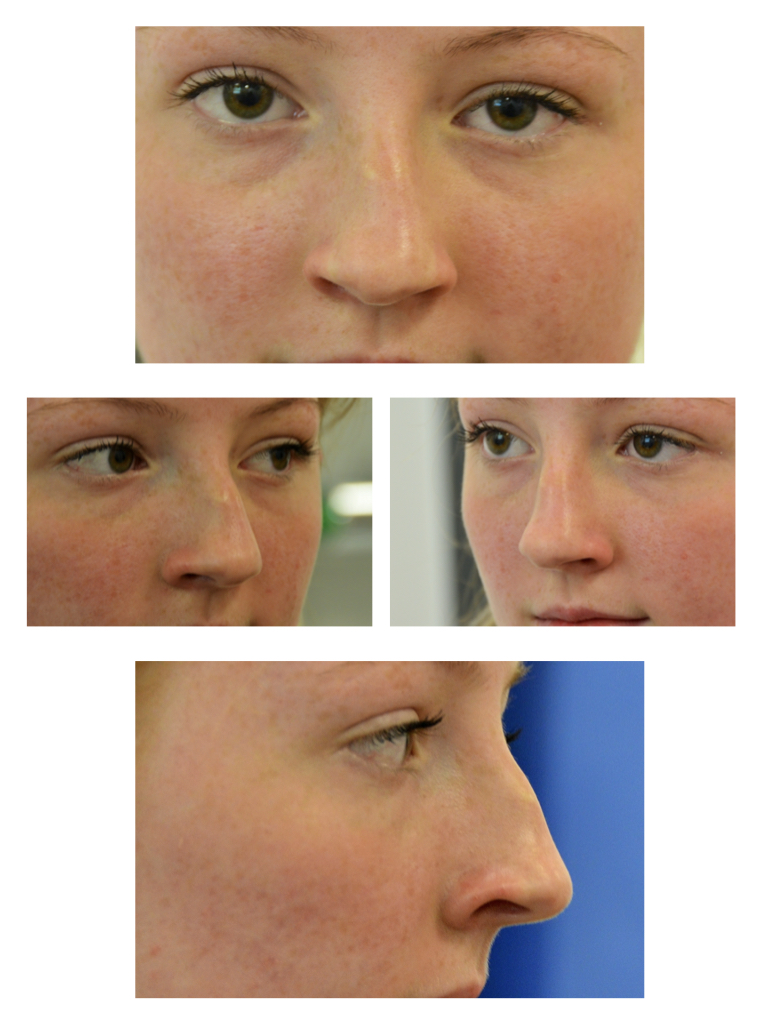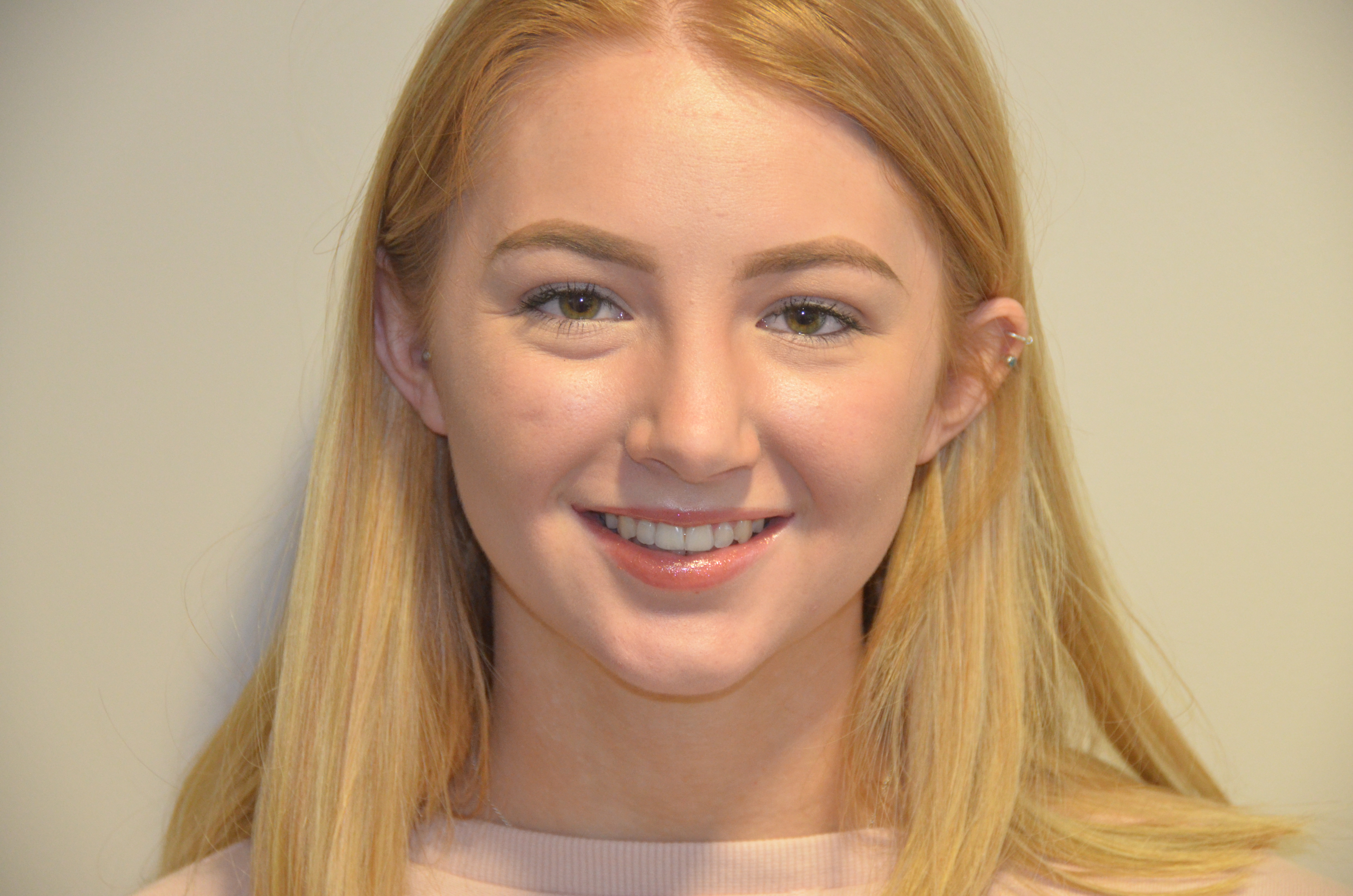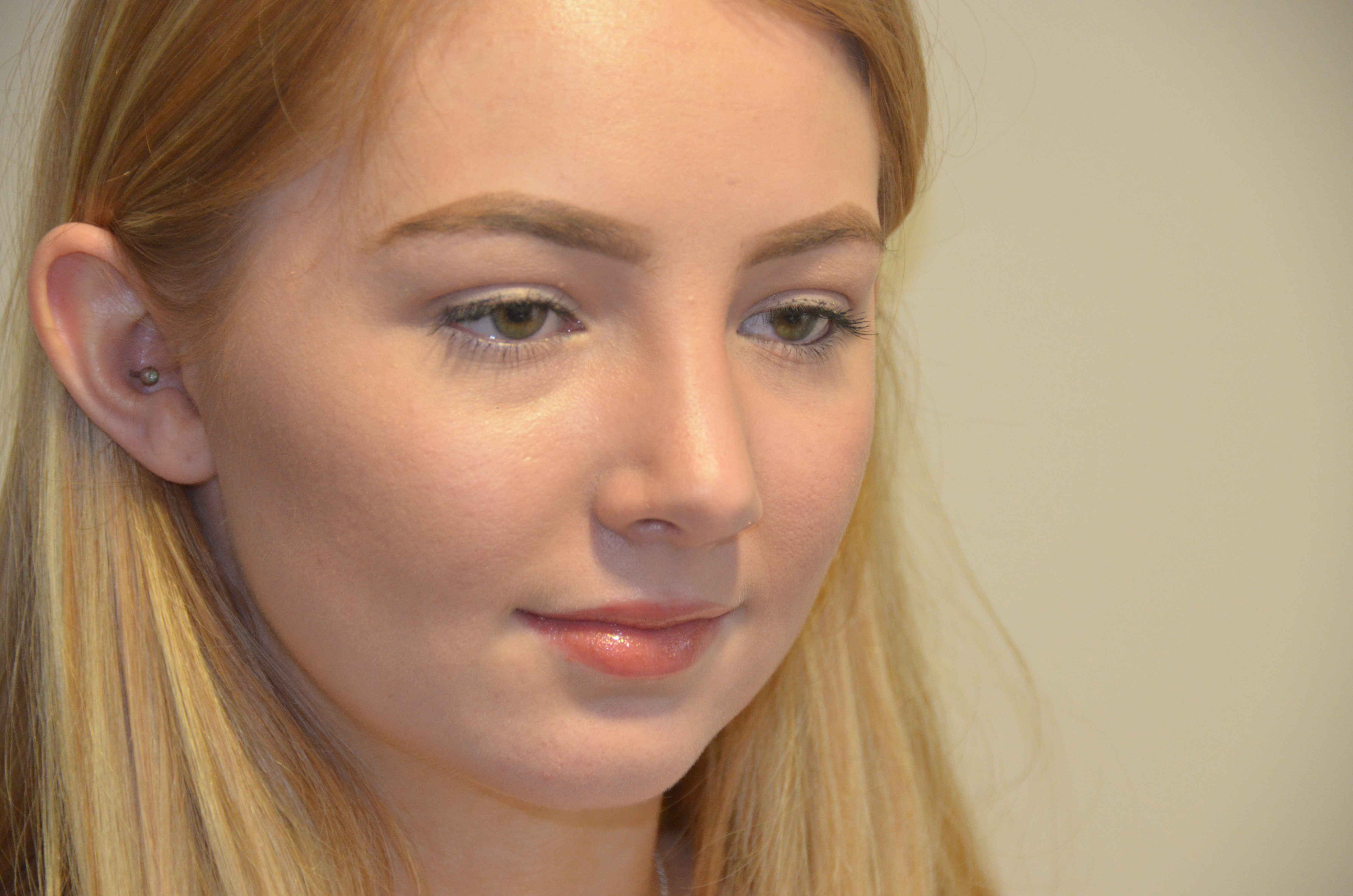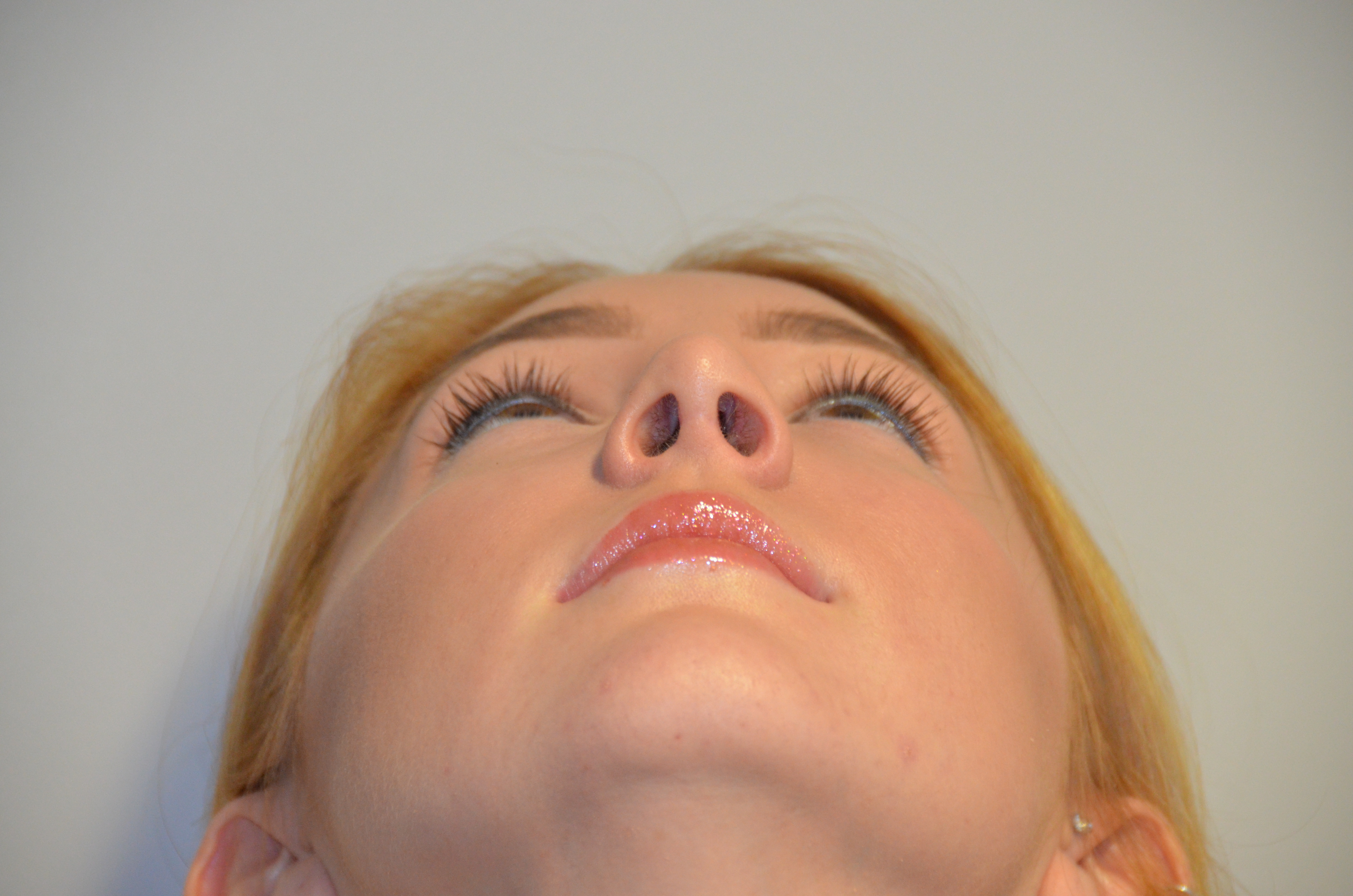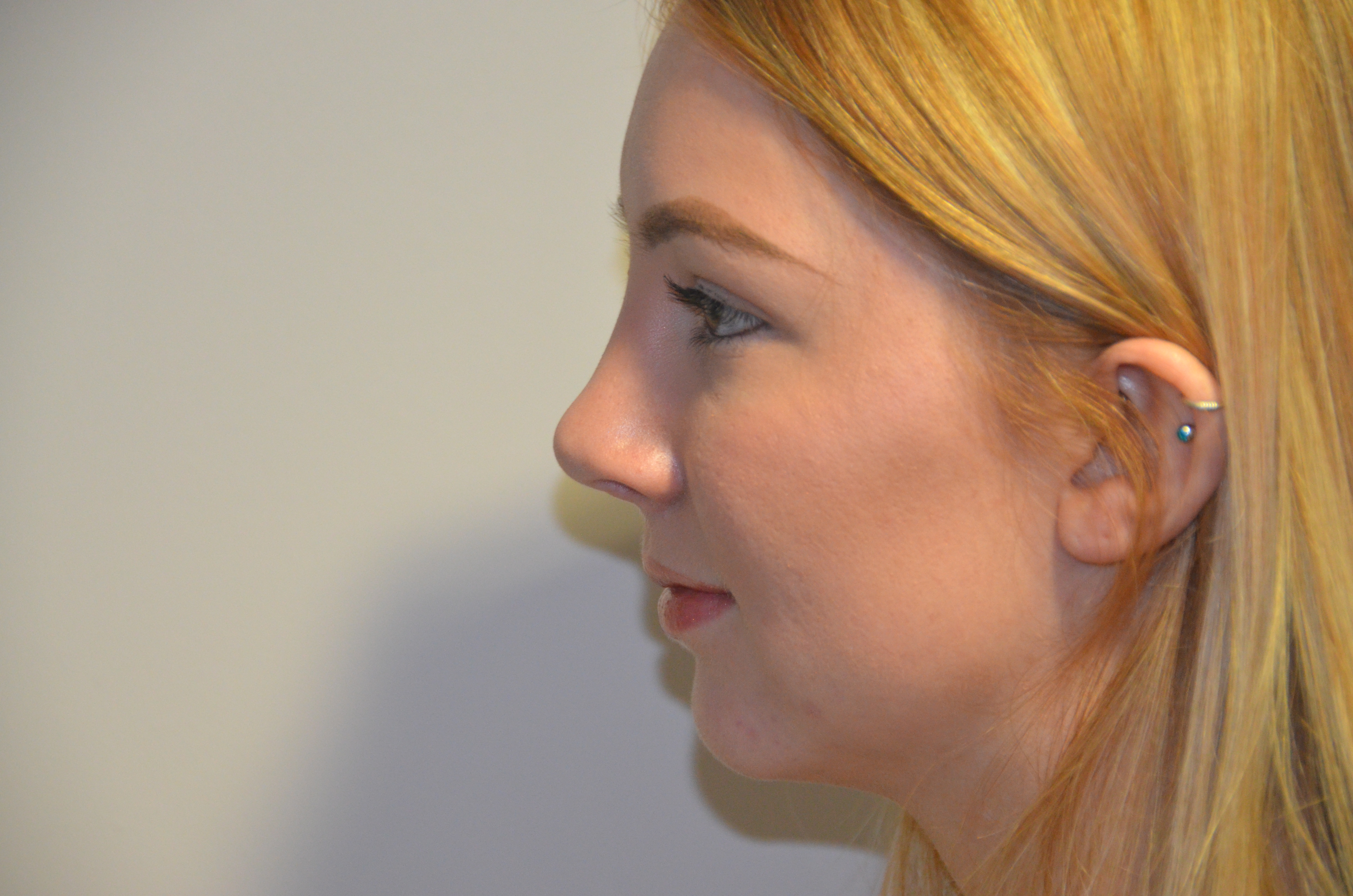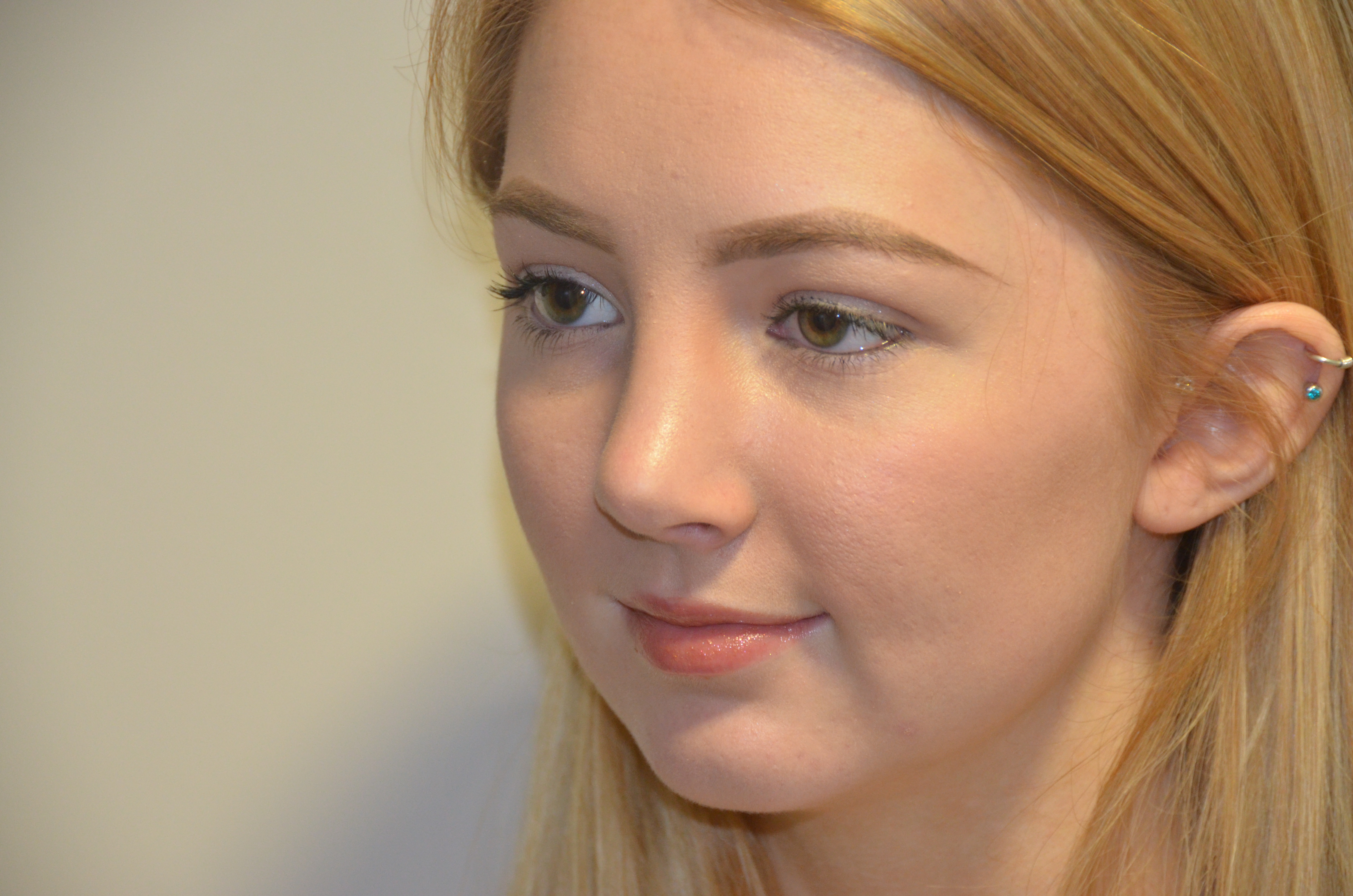Rhinoplasty - Nose Reconstruction
What is Rhinoplasty?
This is an operation performed by an ENT specialist to correct or improve the shape (and function) of your nose. Your nose may have been damaged by an injury or the shape may have changed as you have grown older.
Why do people have Rhinoplasty?
You may not be happy with the shape of your nose or with the way your nose works. The shape of your nose is decided by a complex relationship between the underlying cartilage and bone, by the thickness of your skin, by any treatments you may have had previously, and by any nasal injuries. The reasons for having a rhinoplasty are very personal but are often related to confidence in your appearance.
What does surgery involve?
The surgery that your specialist recommends depends very much on his assessment of the underlying causes. You may be concerned by a very visible bump or by a misshapen tip. The surgery to correct these deformities may be addressed from inside your nose if they are subtle and straight-forward, or may include a cut on the skin if the deformity is extensive or complex. A precise cut on the skin heals extremely well. If you have have had rhinoplasty before, a cosmetic deformity (mid-third depression, saddle) may need to be corrected using cartilage borrowed from the bowl in your ear. This will not change the shape of your outer ear. Surgery is performed under a general anaesthetic and as a day case. To protect the new shape of your nose, your specialist will usually leave a cast on your nose for 7 to 10 days after your surgery. The skin around your eyes may swell or bruise, but this is not a certainty. Your nose will feel quite blocked for 2 or 3 weeks after your surgery. You may be asked to take a course of antibiotics after your surgery. You will be asked to use a saline nasal douche and possibly a decongestant. The surgery is not particularly painful.
What is the recovery time?
Other than a blocked nose after your surgery, you should not feel particularly unwell after rhinoplasty. You will still be able to move around as normal but I will ask you to avoid bending, lifting and straining for 2 weeks after your surgery. As a good 'rule of thumb', you should aim to keep your head above your heart. You will be asked to stay away from work for 2 weeks after your surgery, to avoid unnecessarily picking up viruses. This does not mean that you will not be able to work from home though. Your nasal blockage will steadily improve over the first 2 to 3 weeks after your surgery. Any swelling or bruising around your eyes will also improve over this time. The shape of your nose and your breathing will continue to improve for 6 to 12 months after your surgery. The swelling of your nose over this time can make your nose look chubby to you and people close to you. This is not usually noticeable to the general public though.
When can I go back to work?
You will be advised to take 2 weeks off work. You will be sent an appointment to be seen in clinic 5 to 10 days after your surgery. Very occasionally, you may need a third week of recovery.
Is Rhinoplasty painful?
Not particularly. You will be discharged with strong painkillers as a precaution but very quickly, after a day or two, you will probably find that these are too strong. Regular Paracetamol is usually all that is required after this time for perhaps 5 to 7 days after your surgery. If, however, you find that your pain steadily increases in the postoperative period rather than improves, Mr Bhalla will want to see you earlier than planned as this may be a sign of infection.
What could go wrong?
Complications after rhinoplasty are uncommon. However, these are:
- bleeding
- infection
- numb upper lip or incisor teeth
- septal perforation
- reduction or loss in sense of smell
- skin thread veins (telangiectasia)
- callous formation
- skin necrosis
- persisting deformity requiring revision surgery
Although complications after rhinoplasty are unusual, it is important that these are discussed with you as part of the consent process. Two things though that Mr Bhalla is fairly confident of are:
- he will not be able to give you a perfectly straight nose after your surgery
- you will not have the nose that you had before your injury
Both of these are, unfortunately, unrealistic.
What if I am not happy with the results of surgery?
The shape of your nose will continue to refine for 6 to 12 months after your surgery. Any early concerns about the shape usually settle completely by allowing your body to heal itself with the passage of time. Despite the best technical efforts however, healing can be unpredictable. A very small number of operations may need to be revised due to an obvious persisting abnormality. Mr Bhalla will discuss the frequency of these episodes with you as part of the consent process and the options open to you to have this corrected. Mr Bhalla is committed to ensuring you are satisfied with the results of your surgery.
What should you do next?
If you would like to discuss the shape of your nose with Mr Bhalla, please contact April (01625 430550 / 07507 782188 or april@managedmedical.co.uk) for an appointment or, fill out an online booking form.
Case studies:
Patient 1, 18yo Female
Post-traumatic nasal deformity
Problems:
Mixed dorsal hump
Depressed and pinched mid-third
Irregular dorsum
Under-projected tip
Asymmetric tip
Thin skin
Intervention:
Open-approach septorhinoplasty
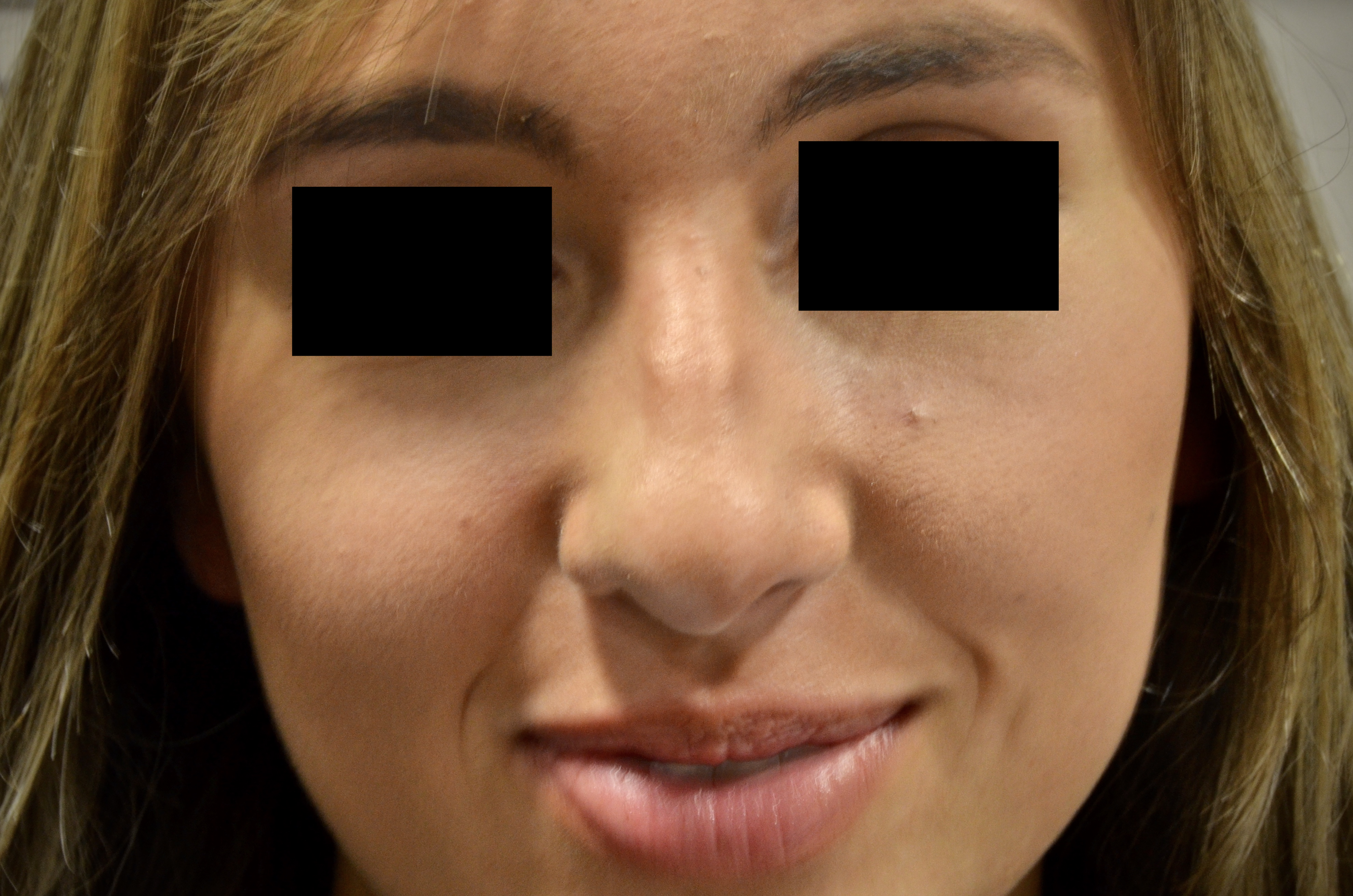
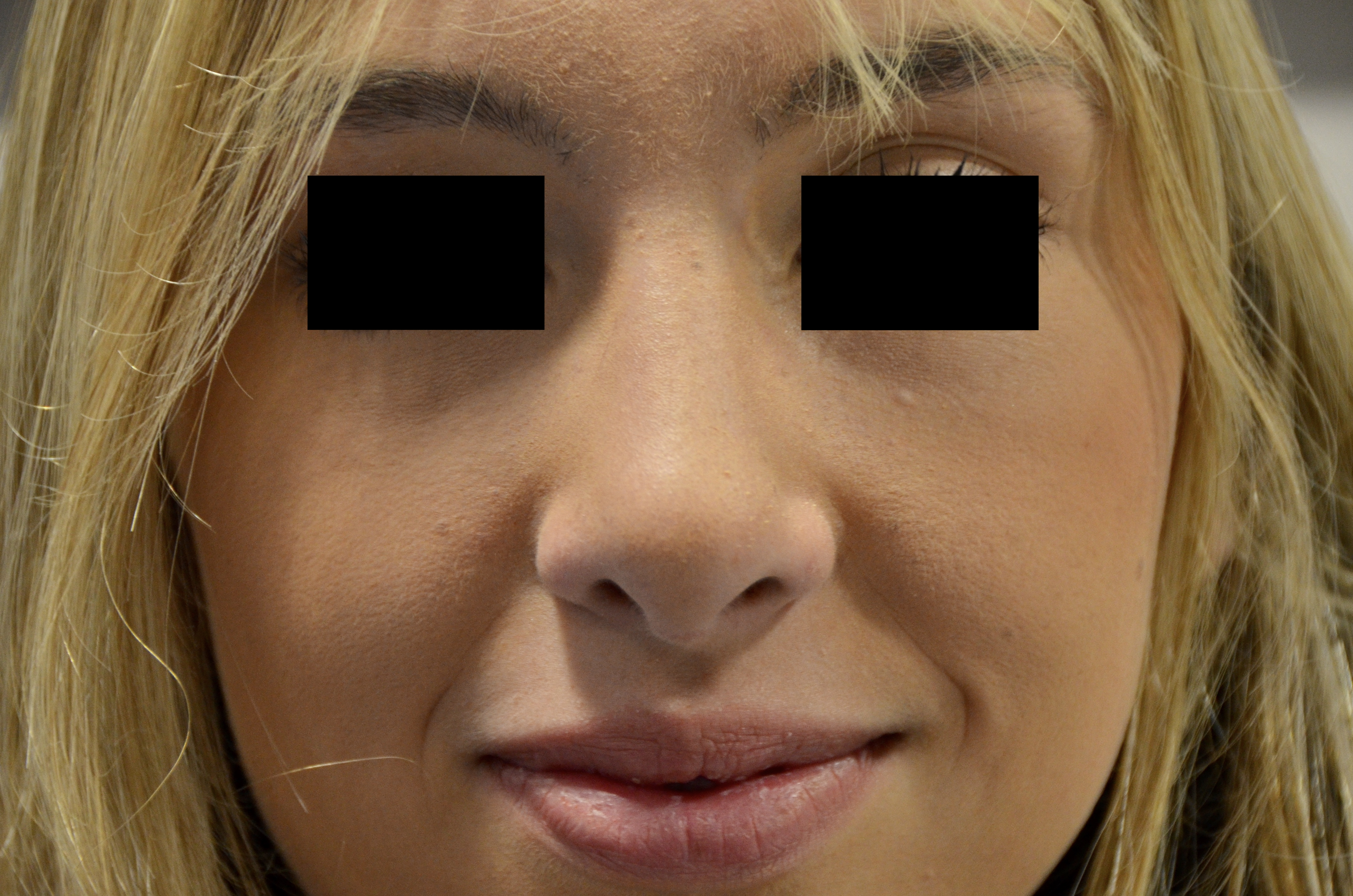
Patient 2, 33yo Female
Before and After rhinoplasty images
Problems:
Mixed dorsal hump
Over-projected tip
Under-projected radix
High nostril arches
Thin skin
Intervention:
Open-approach septorhinoplasty
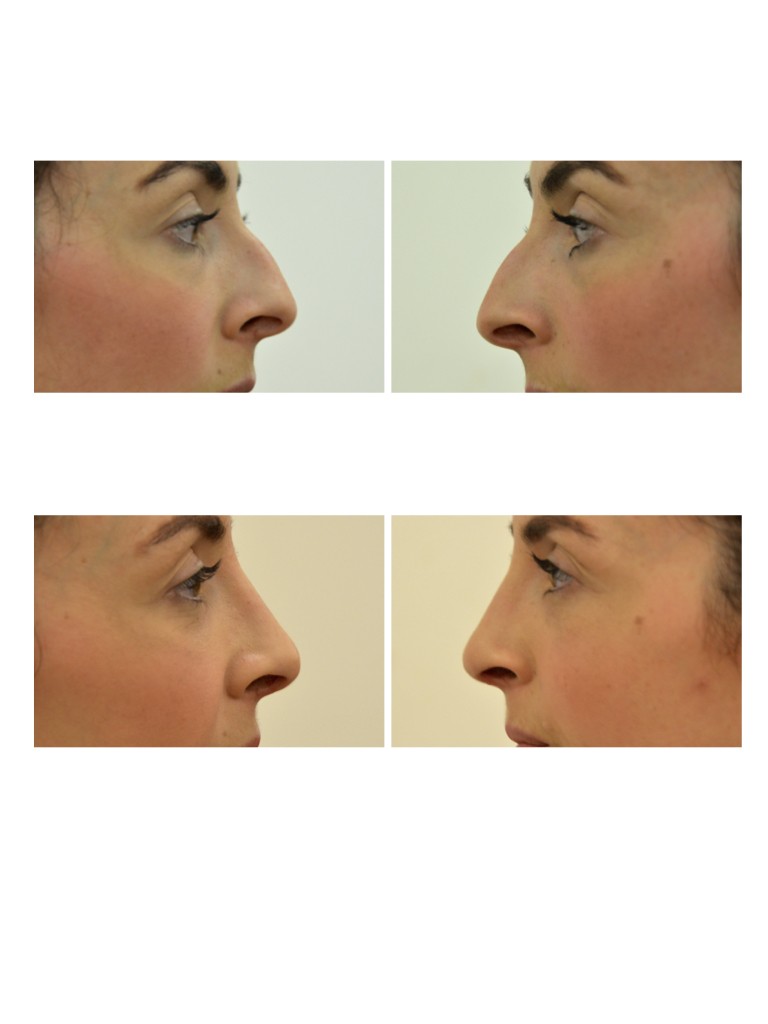
Patient 3, 26yo Male
Nasal deformity
Before (above) and After (below) Rhinoplasty photographs - including healed mid-columellar inverted V incision 13 months after surgery
Problems:
Mixed dorsal hump
Depressed right upper lateral cartilage
Left nasal bone is lateralised
Thick skin
Droopy and pointed nasal tip
Nasal septum deviated to the left side
Intervention:
Open-approach septorhinoplasty
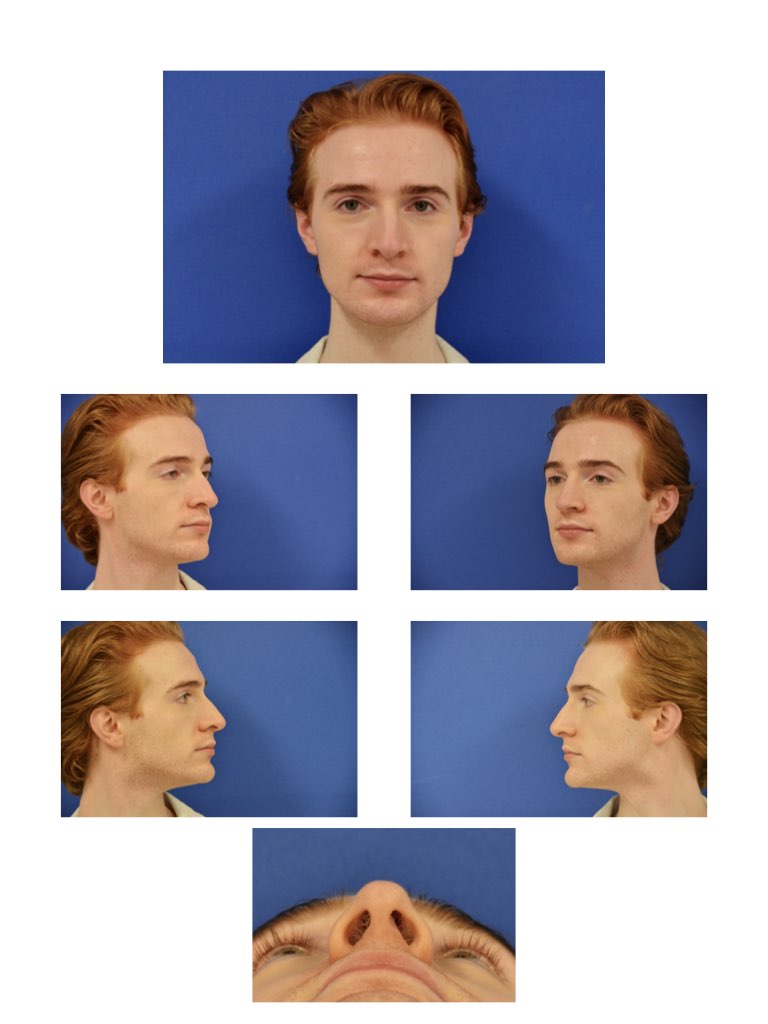
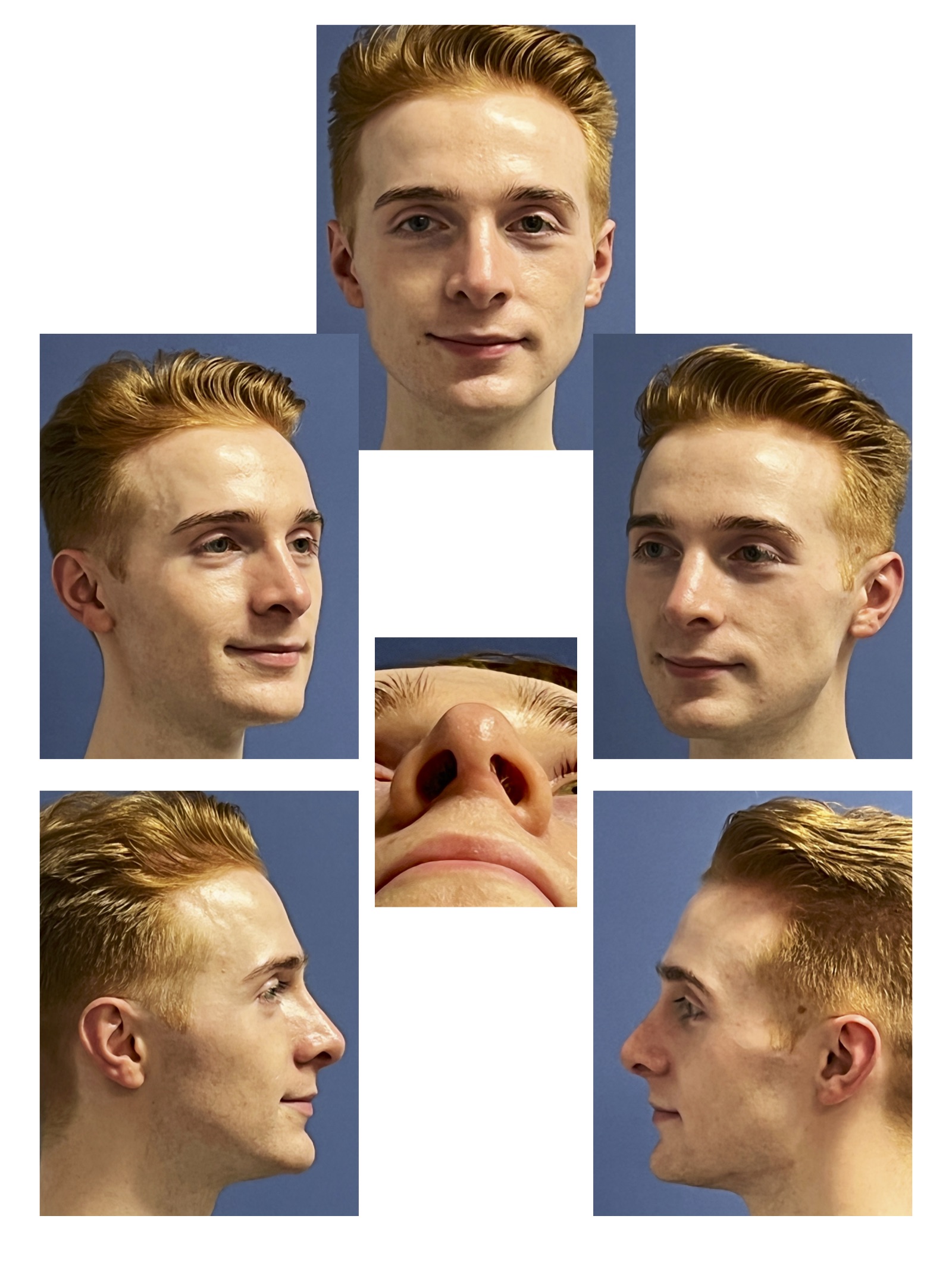
Patient 4, 18yo Female
Congenital nasal deformity
Before (above) and After (below) Rhinoplasty photographs - including healed mid-columellar inverted V incision 13 months after surgery
Problems:
Incredibly complicated nose
Thin skin
Mixed dorsal hump
Depressed right upper lateral cartilage
Under-rotated, under-projected nasal tip
Poor tip definition
Twisted nasal septum
High nostril arches
Intervention:
Open-approach septorhinoplasty
